Photography has its roots in art, although many digital photographers have entirely forgotten about it. We thrive on technology and modernity and never look back. And what a mistake we make. Looking at art is one of the most efficient ways to find inspiration, learn to master color, light, and composition, and grow a profound sense of beauty. So admire the landscapes of Paul Cézanne (1839 – 1906), an influential Post-Impressionist French painter, and get a better understanding of how to use space and create mesmerizing landscape photographs. Let’s take a moment to learn landscape photography composition from Paul Cézanne.
Concentrate on a Solid Subject Matter
Paul Cézanne is considered the father of Cubism and Abstract art because he chose to depict buildings and other elements as blocks in many of his paintings. He didn’t care much about architectural details and preferred to use components for painting the landscape surrounding the buildings.
It may be because of the recognizable architecture of his hometown, Aix-en-Provence, specific to the Southern France of the XIXth century or due to artistic reasons. However, the solid block of color that is a building or a small town creates a strong focal point and a concentrated perspective.
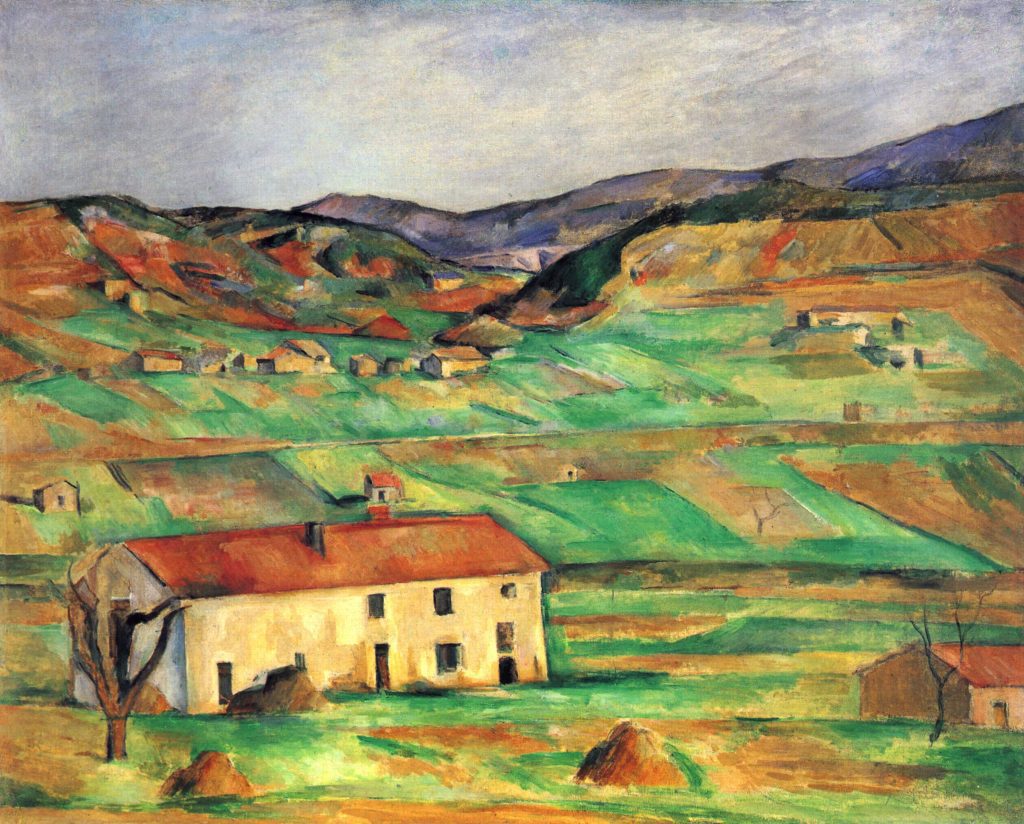
Paul Cézanne, Gardanne, 1890, source: wikiart.org
But using a solid focal point is not all. Cézanne cuts the perspective, which is unusual for landscapes. Instead of using a wide angle, he concentrates the entire painting around his focal point. The countless paintings representing Mont Sainte-Victoire are guidelines for using solid subject matters in landscape photography.
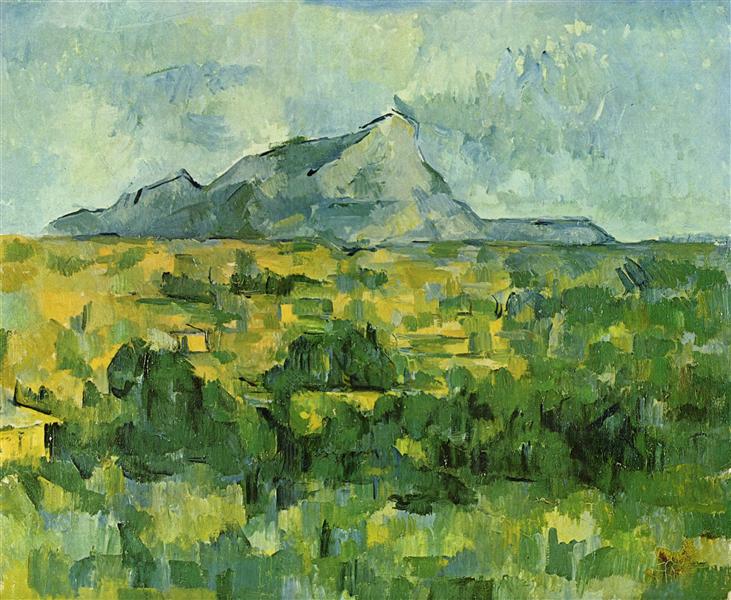
Paul Cézanne, Mont Sainte-Victoire, 1906, source: wikiart.org
So don’t rely solely on wide-angle lenses for landscape photography. Use a medium-range telephoto lens from time to time and frame a solid, large subject as if it was the only element in the frame.
Leave Space for Expansion
Here comes the contradiction. Although Cézanne creates a concentrated perspective and a solid focal point, he also leaves space for expansion and imagination. He doesn’t cut the subject short. He leaves some room around it. It is a space small enough to create the focal point and large enough to allow the viewer to imagine the fields or hills surrounding the focal point.
And the space has another purpose: it creates the depth of field essential for painting or photographing landscapes. The layers of elements in front and behind the main subject recreate the 3D space we try to describe using only two dimensions. So layer your compositions as well and find the perfect camera angle and position.
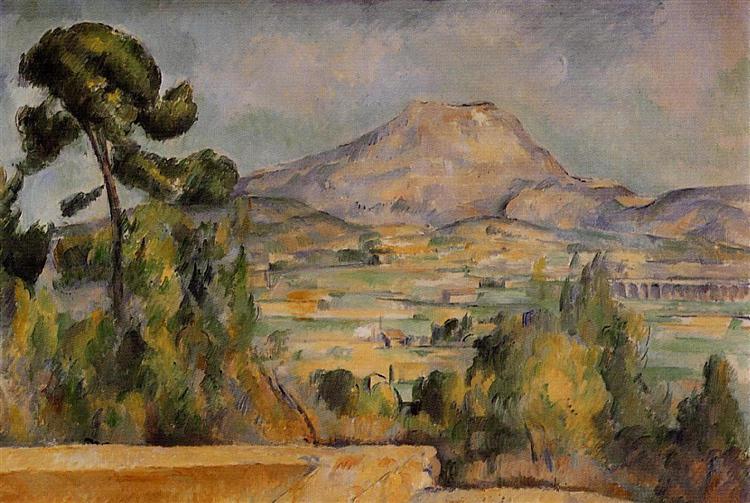
Paul Cézanne, Mont Sainte-Victoire, 1890, source: wikiart.org
Create Balance with Imbalance
You know how important balance is for an appealing composition that invites the viewer to spend more time looking at your work. For landscape photos, in particular, you aim to respect the geometry of the land and keep the horizon a straight horizontal line, trees, and electric poles straight vertical lines, and so on. Paul Cézanne had a slightly different approach. He didn’t draw the horizon as a straight horizontal line. He drew it with a little inclination to create a more powerful leading line and lead the viewer’s eye toward a point of interest.
Overall, the small imbalance in one place is balanced with another small imbalance in another place. His compositions are appealing and inviting without being rigorously correct. So don’t be afraid to experiment with unusual angles and camera positions and create unique landscape photos, representing the sceneries fluid, natural, and beautiful as they often are.
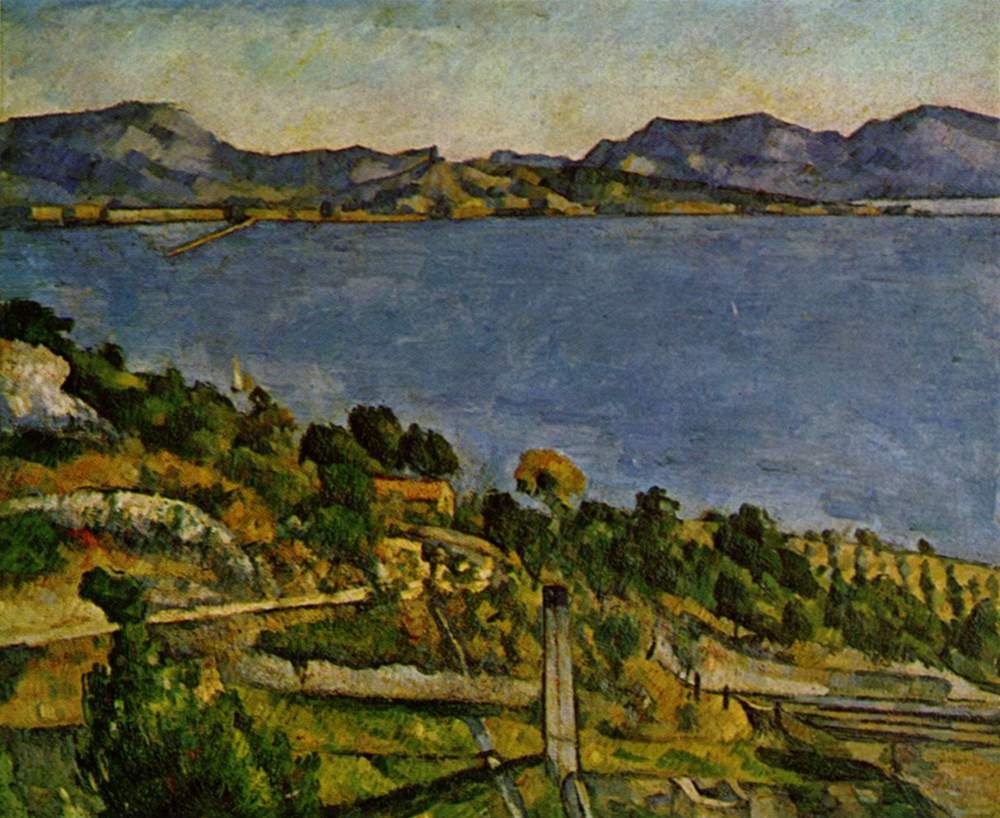
Paul Cézanne, Sea at l’Estaque, 1885, source: wikiart.org
Connect with Your Subject Matter
Almost all landscape paintings of Paul Cézanne represent his hometown and the surrounding area. His landscapes cover a 30km surface but nevertheless provide endless beauty and fresh perspectives. The viewer doesn’t get bored, not even when looking at the hundredth painting featuring the Mont Sainte-Victoire. Why? Because Cézanne loved this place, and his love transcended time.
Each brush of color, each spot of light, and each shade of green or yellow are there for a reason and tell a story. If you take one lesson from Paul Cézanne’s work, take this: look deep into the soul of your subject and don’t take anything for granted.
Conclusion
Look at art for inspiration and valuable perspective, composition, and color lessons. Study art history to understand how artists’ lives are mixed with paint to produce amazing artworks that don’t seize to impress us. There is more than technology and tools. The art of photography relies on being vulnerable and sharing your innermost thoughts and feelings.
If you are looking for more landscape advice, click here.
Cover photo: Paul Cézanne, Mont Sainte-Victoire and the Viaduct of the Arc River Valley, 1882 – 1885, source: wikiart.org

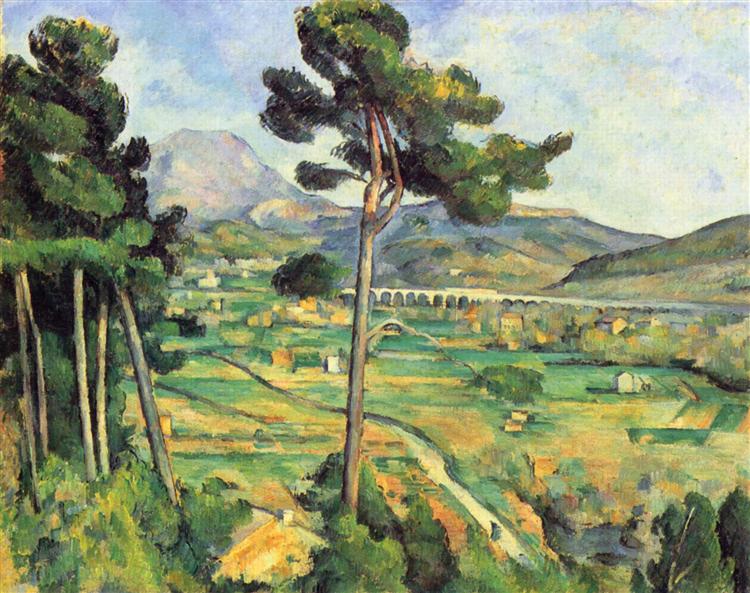
Comments
Pingback: Tips to Build Confidence in Your Photography - Take Better Shots